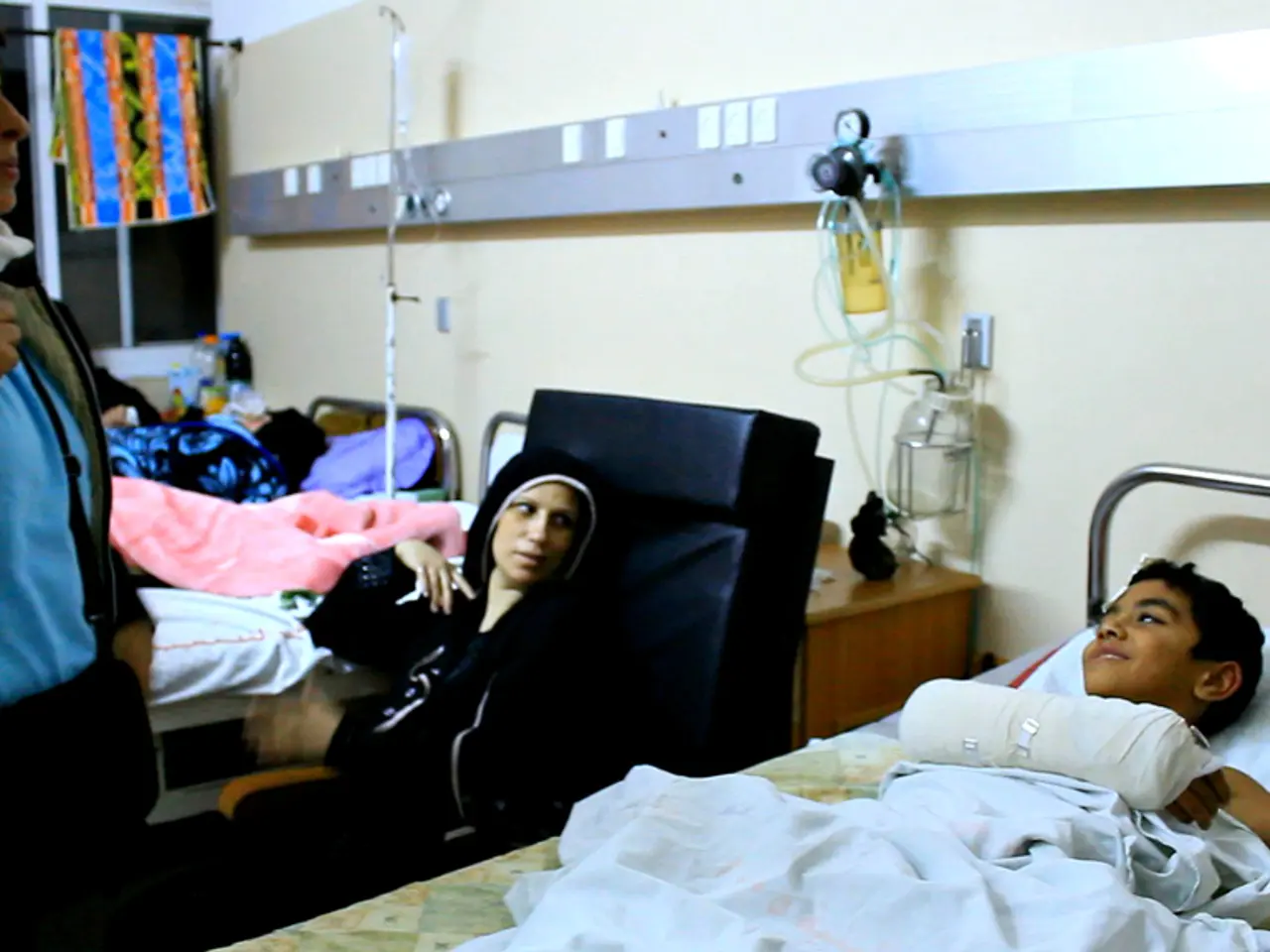Post-Esophagoscopy Complications and When to Seek Medical Advice
An esophagoscopy, a procedure doctors use to explore the upper gastrointestinal (GI) tract, carries a low infection rate, according to a 2022 systematic review. However, a rare but serious complication, esophageal perforation, can occur. This article delves into the causes, symptoms, treatment options, and prognosis of esophageal perforation.
Causes and Risk Factors
Esophageal perforation is predominantly caused by iatrogenic injury during endoscopic procedures, including standard diagnostic esophagoscopy and therapeutic interventions like endoscopic dilatation. Other risk factors include esophageal diseases such as achalasia, diverticula, and cancer, as well as trauma from chest or abdominal injuries, genetic factors affecting connective tissue strength, chemical injury from swallowed acids or alkalis, and lifestyle factors like chronic alcoholism and smoking.
Clinical Symptoms
Symptoms of esophageal perforation typically include sudden severe chest or neck pain, difficulty swallowing (dysphagia), subcutaneous emphysema (air under the skin, causing crepitus), fever and signs of infection if mediastinitis develops, respiratory distress or signs of sepsis in severe cases.
Treatment Options
Management depends on the perforation’s size, location, patient condition, and time to diagnosis. For small, contained perforations diagnosed early, minimally invasive techniques like endoscopic clipping have high success rates, especially when performed by experienced endoscopists. Surgical treatment is required in larger or uncontained perforations, delayed diagnosis, or when endoscopic methods fail. Supportive care, including broad-spectrum antibiotics, intravenous fluids, nutritional support, and close monitoring, is also crucial.
Prognosis
Mortality remains significant, with reported early mortality rates around 40% in some series, particularly when diagnosis or treatment is delayed. Early detection and timely, appropriate intervention significantly improve outcomes. Severe complications can arise from mediastinitis, including rare involvement of adjacent structures such as mycotic aortic pseudoaneurysm, which requires urgent surgical repair.
In summary, esophageal perforation during esophagoscopy is an uncommon but dangerous event predominantly caused by iatrogenic injury during endoscopic procedures. Symptoms are acute and require urgent attention. Treatment ranges from advanced endoscopic closure techniques to surgery, with early intervention critical to reducing morbidity and mortality.
Esophageal perforation, a serious complication from esophagoscopy, is associated with various risk factors beyond iatrogenic injury. These include chronic diseases like achalasia, diverticula, and cancer, as well as lifestyle factors such as smoking and chronic alcoholism. When it comes to mental health, coping with such a medical condition can be challenging and stressful, requiring support from health-and-wellness programs for emotional resilience. Proper therapies-and-treatments for esophageal perforation depend on the perforation's size and location, with early intervention and appropriate methods like endoscopic clipping or surgery ensuring the best possible prognosis.




